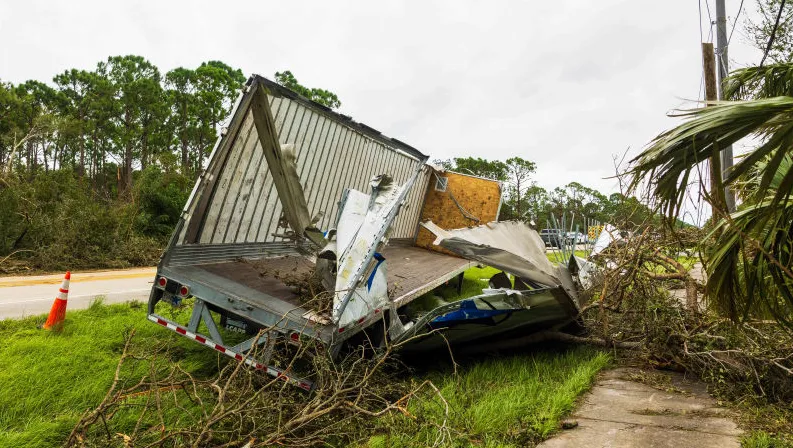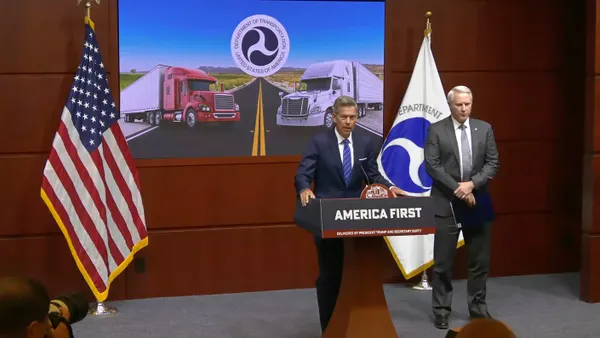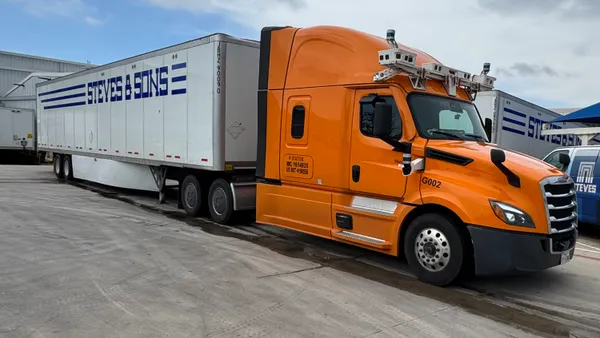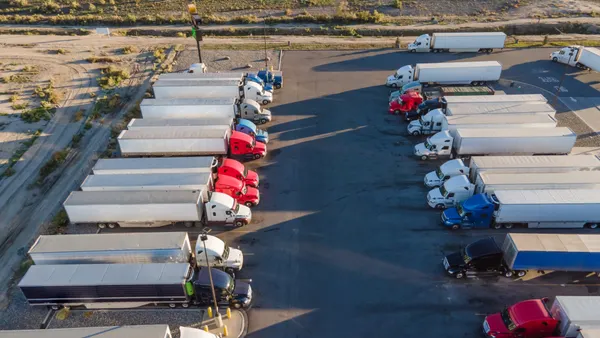Catastrophic back-to-back hurricanes Helene and Milton destroyed trucks and trailers, cut off key freight corridors indefinitely and hit carriers’ Q3 earnings while devastating the Southeast in the last month.
LTL and intermodal operations, which typically do not observe the same post-disaster demand bump as their truckload counterparts, saw some of the worst effects of the deadly storms, executives said in earnings calls and other public updates.
Estes Express Lines’ terminal in Asheville, North Carolina, “experienced such destruction that it will be out of service for the foreseeable future,” President and COO Webb Estes said in a video update earlier this month.
The Richmond, Virginia-based carrier rerouted freight and secured additional dock space to continue to serve customers in the area, the COO said. The company’s employees are safe and raising money for impacted communities, he noted.
Knight-Swift Transportation Holdings’ U.S. Xpress and AAA Cooper Transportation subsidiaries were disproportionately affected by the hurricanes, CFO Andrew Hess said on a Q3 earnings call. The storms had permanent impacts on the freight giant’s LTL and intermodal operations, Hess said.
“With recent hurricanes negatively impacting volumes early in the fourth quarter, we no longer expect intermodal load count to be sequentially stable with the third quarter,” the CFO said. “This will also likely cause the business to be essentially breakeven in the fourth quarter, whereas we had previously projected to be slightly profitable.”
Old Dominion Freight Line lost revenue due to the hurricanes, and the carrier expects interstates in western North Carolina to remain closed for up to a year, CFO Adam Satterfield said on a Q3 earnings call.
“We were initially pleased that all of our employees got through everything OK, from everything we understand, from a health standpoint, as well as property standpoint,” Satterfield said. “Our network was fine, as well. I think we were lucky in the sense of none of our properties really suffered any significant damage.
“We were down for a bit, which is typical when you have big major storms like that move through, but have recovered since nicely.”

Saia likewise took a revenue hit but avoided any major impacts to its workforce or terminals, CFO Matthew Batteh said on a Q3 earnings call.
“Those are pretty big markets for us and make up a good chunk of our revenue, so there is an impact,” Batteh said. “Sometimes that volume doesn't always come back. You're really dependent on order flow at times. ... We may be operational, but some customers may still be closed, so you face that a little bit.”
The storms and last year’s cyberattack on Estes made Saia’s year-over-year Q3 shipment comparisons challenging to interpret, CEO Fritz Holzgrefe said the call.
“All those things create a fair amount of noise around shipments into the quarter,” he said.
The hurricanes created issues for TForce Freight in the Carolinas, Georgia and Florida, TFI International CEO Alain Bédard said on the parent company’s Q3 earnings call.
“The start of October was a little bit depressed in terms of volume,” Bédard said.
Waste carriers are handling most of the cleanup response so far, but TForce expects to benefit from rebuilding efforts next year, if not in Q4, the TFI CEO told investors.
“Maybe we'll see some benefit in Q4, but who knows,” he said. “We don't know. But one thing is for sure: if it's not Q4, it's going to be Q1.”












